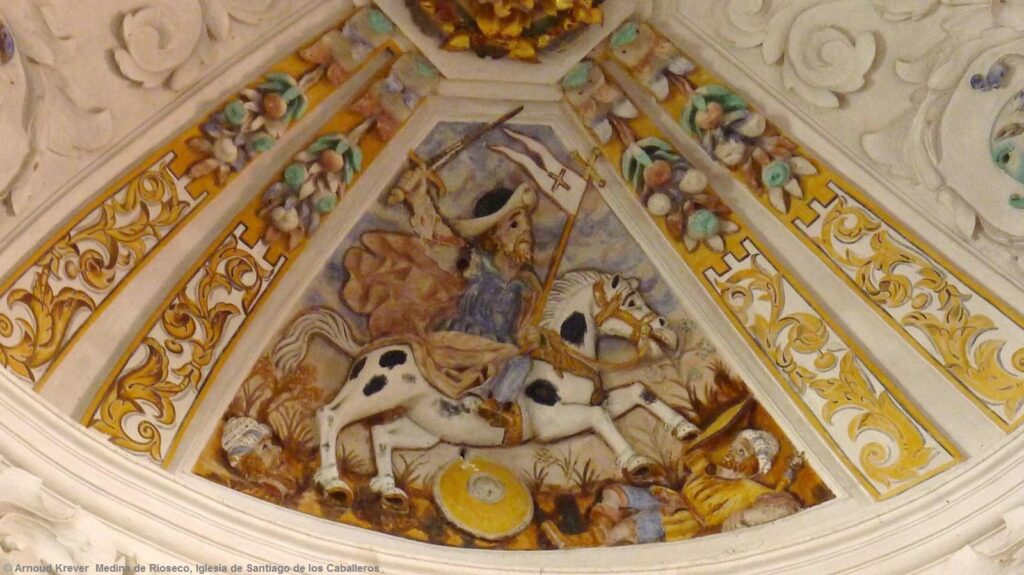Saint James the Greater (nameday 25th of july) was born around 3 a.C. in Betsaida, Galilee as the son of the fisherman Zebedee and Salome. He belonged tot he inner circle of Jesus Christ. He brought the Gospel to Judea, Samaria and Spain. After his return to Jeruzalem he was beheaded by de sword in 44 a.C. on orders of king Herod Agrippa I. Led by an angel his discipels Athanasius and Theodorus brought his corpse to Spain in a boat. They went ashore in present-day Padrón. In a cart pulled by wild bulls that were miraculously tame for the occasion Saint James was brought to a grave that was later forgotten and found back around the year 813 a.C. on the place where the Catedral de Santiago now stands.
According to legend in 844 a.C. a battle was fought near Clavijo south of Logroño between a Christian army led by king Ramiro I of Asturias and a Muslim army led by Abderrahman I, emir of Granada. The Christian army, vastly outnumbered by the Moors, was about to lose the battle when a horseman on a white stallion appeared, armed with a banner and a sword. He cut off Moorish heads by the thousands. Overcome by fear the Moors fled. Victory for the Christians! De horseman was identified as Saint James. This manifestation of Saint James is called Santiago matamoros, Saint James the Moor-slayer. Santiago matamoros has been patron-saint of Spain from ca. 1620 to 1760. He was succeeded as such by Santiago apostól. The term Santiago matamoros is nowadays considered “less politically correct” and is gradually replaced by Santiago caballero, Saint James horseman.
The manifestation of Saint James as a pilgrim is called Santiago peregrino or Santiago apostól. The associated attributes are shells (scallops, Pecten maximus), fixed on cap, hat or cloak, a walking-stick with a hollowed calabash or water bottle attached and a travelling bag. Allmost allways with a Bible as well. Images of pilgrims may look alike, but without Bible.
The “Orden Militar de Santiago de la Espada”, the “Military Order of Saint James of the Sword” is an old Spanish military order of knighthood, that was founded in 1170. Knight of this order protected pilgrims on the Camino. They played a role in the Reconquista, the liberation of Spain of the Moors, as well. Its main symbol is the Santiago-cross, a combination of a cross and s sword. As a result of this Saint James is depicted with a sword as well.
Images of Saint Roch are similar to those of Saint James with the difference that Saint Roch is depicted with a bare leg and wound caused by the pest. He is accompanied by a dog that brings him a lump of bread each day.













